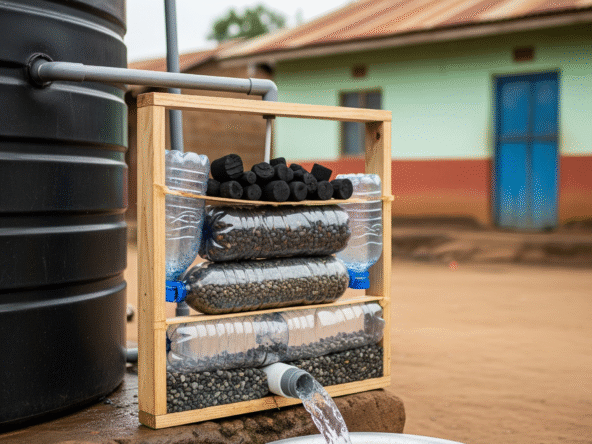In rural Kenya, solar-powered water pumps are transforming how households and farms access and manage water. With unreliable electricity and rising fuel costs, these eco-friendly systems have become the go-to solution for refilling poly tanks, underground storage, and supporting irrigation or household use especially in off-grid or semi-arid regions.
This guide walks you through how solar pumps work, how to set one up for your home or farm, what it costs, and how to integrate them with popular Kentank, IBC, or steel tanks.
1. Why Solar Pumps Make Sense for Rural Homes
Solar water pumps use sunlight to move water from shallow wells, boreholes, rivers, or rainwater tanks into elevated storage tanks for gravity-fed usage.
Key Benefits:
- No recurring energy costs
- Reliable in remote or off-grid zones
- Low maintenance and easy to manage
- Works perfectly with gravity-fed tank setups
Pairing solar pumps with rainwater harvesting systems provides a dependable year-round supply, even during dry seasons.
2. Types of Solar Pumps and Their Use Cases
| Pump Type | Best For | Lift Range | Water Volume |
|---|---|---|---|
| Submersible | Deep boreholes, wells | Up to 150m | Medium to high |
| Surface | Shallow rivers, tanks, ponds | Up to 10m | Low to medium |
| Booster | Increasing pressure to taps | Variable | Medium |
If you’re drawing water from a river to a 5000 litre Kentank, a surface pump may suffice. For deep wells in dry zones like Kitui or Kajiado, opt for a submersible pump instead.
3. How to Set Up a Solar Water Pump System
Follow these basic steps:
- Identify your water source: borehole, well, stream, or rain tank
- Choose a compatible tank type and size (Top Water Tank Brands)
- Install solar panels, preferably facing north or northeast
- Connect to a pump controller
- Attach the system to a storage tank Kentank, steel, or IBC tanks all work
- Add float switches to stop overflows and protect your pump
You can also shield your system with a lockable tank shelter to prevent theft or UV damage.
4. Solar Pump System Cost Breakdown (Kenya)
| Component | Estimated Price (KSh) |
|---|---|
| Solar panels (150W–300W) | 8,000 – 15,000 |
| Submersible pump | 20,000 – 50,000 |
| Controller unit | 5,000 – 10,000 |
| Pipes, wiring, fittings | 5,000 – 15,000 |
| Tank stand or tower | 10,000 – 30,000 |
Total estimated cost: KSh 50,000 – 120,000
Use the Tank Sizing Guide to determine the correct tank for your usage.
5. Best Areas for Solar Pump Use in Kenya
Solar water pump setups thrive in areas with high solar exposure and limited infrastructure, such as:
- Kitui, Makueni, Isiolo – semi-arid regions with boreholes or shallow wells
- Kajiado, Laikipia – farms and off-grid homesteads
- Nyandarua, Meru – rural homes with unreliable KPLC access
Use multi-tank linking systems to balance flow, pressure, and backup storage capacity.
6. Solar Pump Maintenance Tips
- Clean solar panels monthly for maximum power output
- Inspect wiring and connections for corrosion or wear
- Flush pumps regularly if using water from silty sources
- Maintain tanks using this household tank cleaning guid
Solar-powered pumps provide a clean, cost-saving way to boost water access in Kenyan rural homes. When combined with durable tanks, float switch automation, and smart placement, these systems deliver year-round reliability with almost zero running costs.
Explore More Water System Guides:


